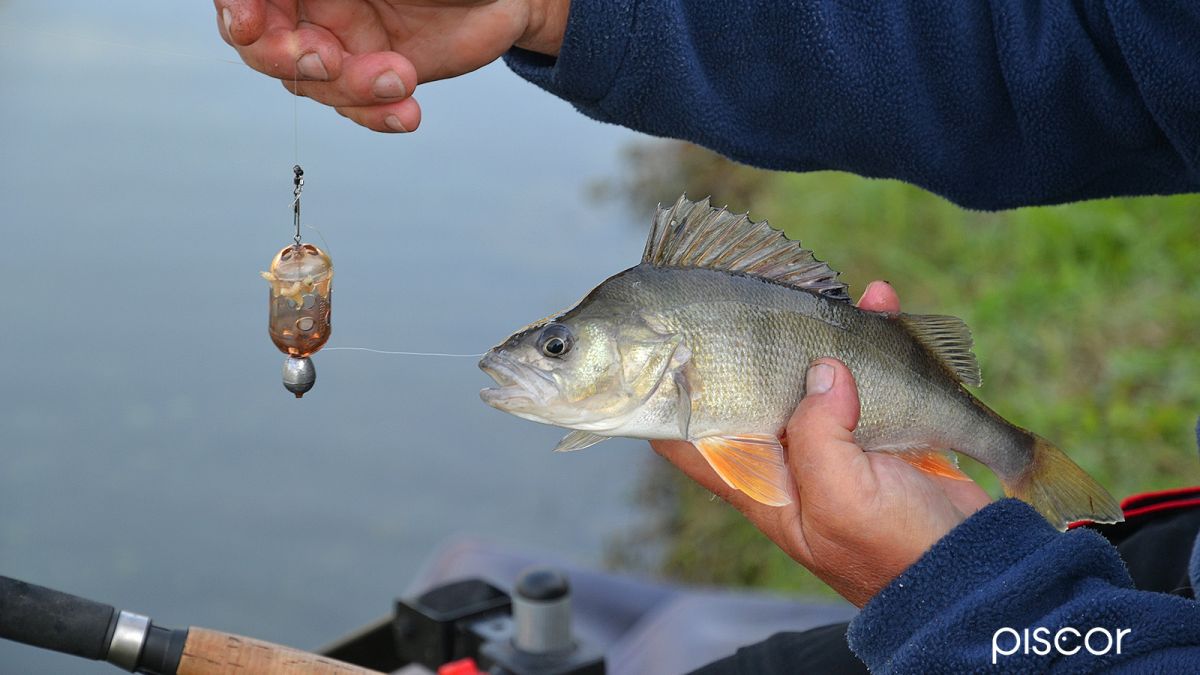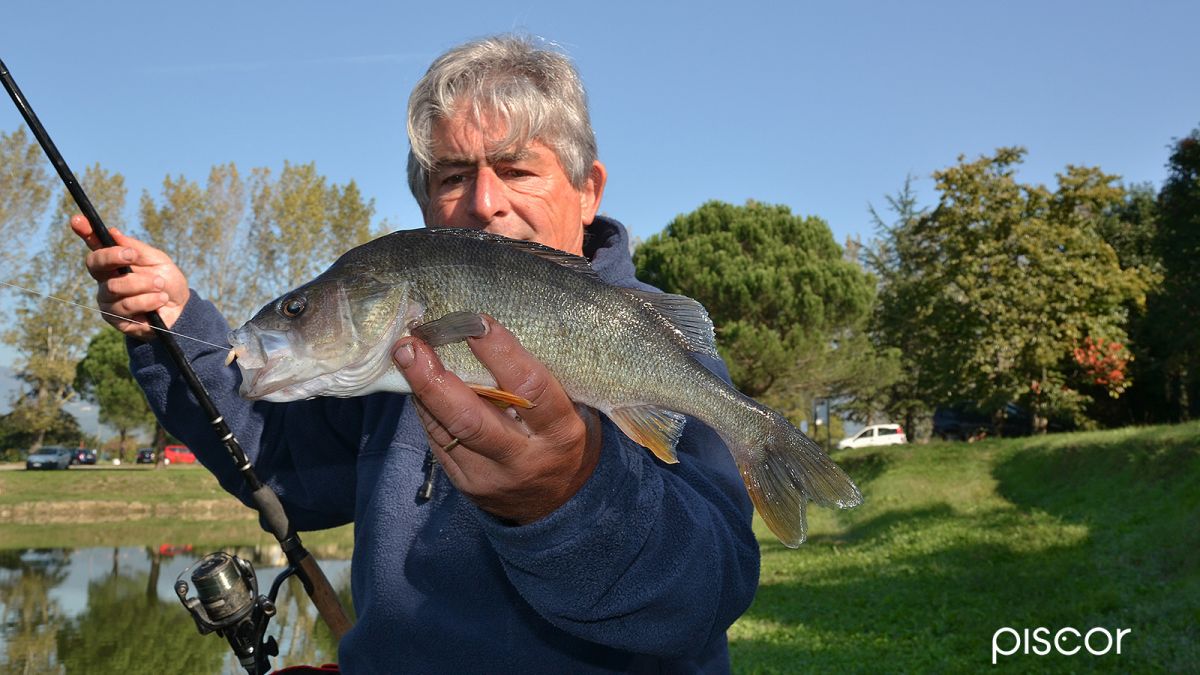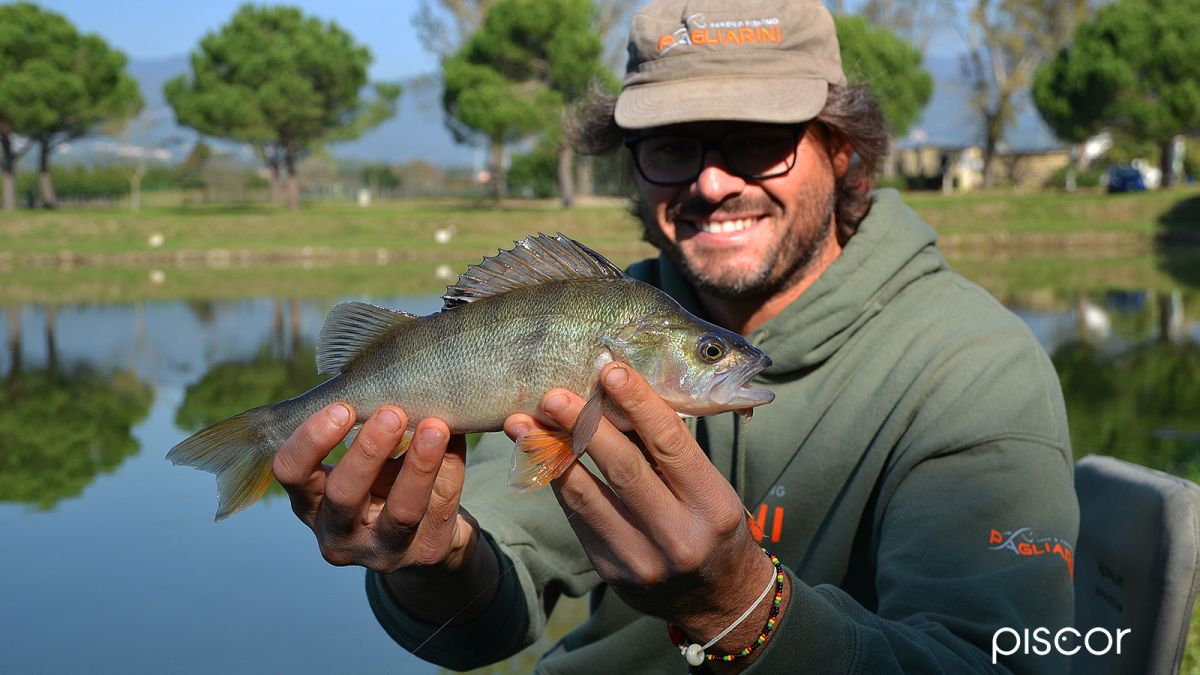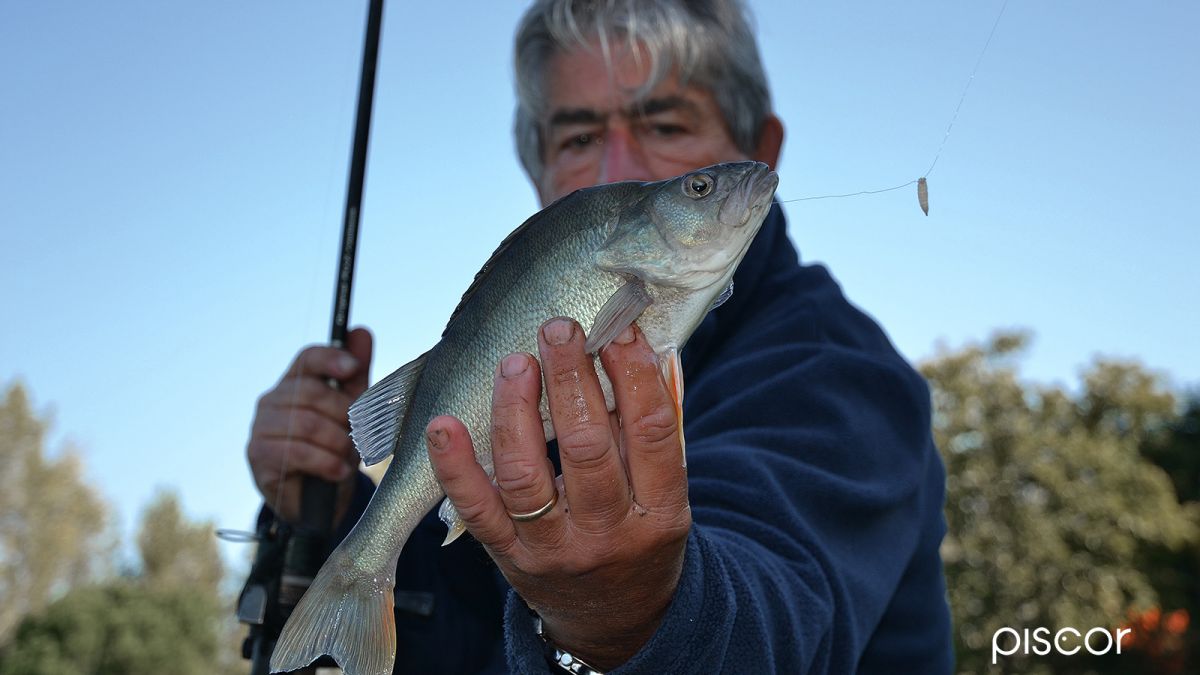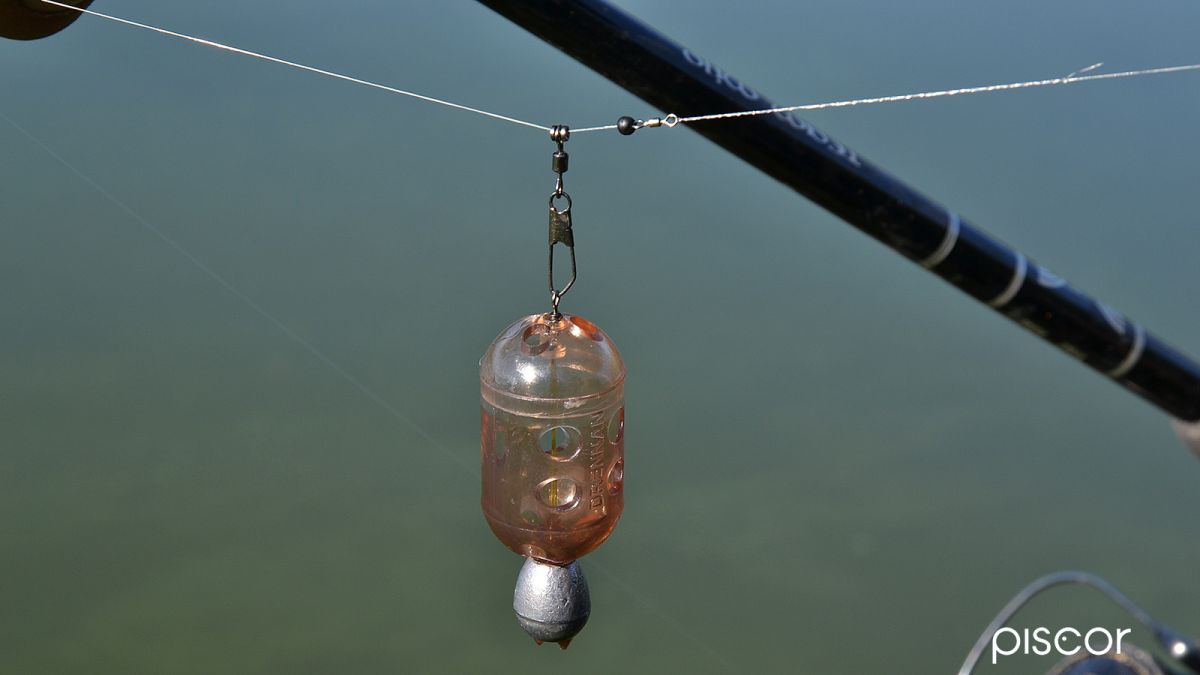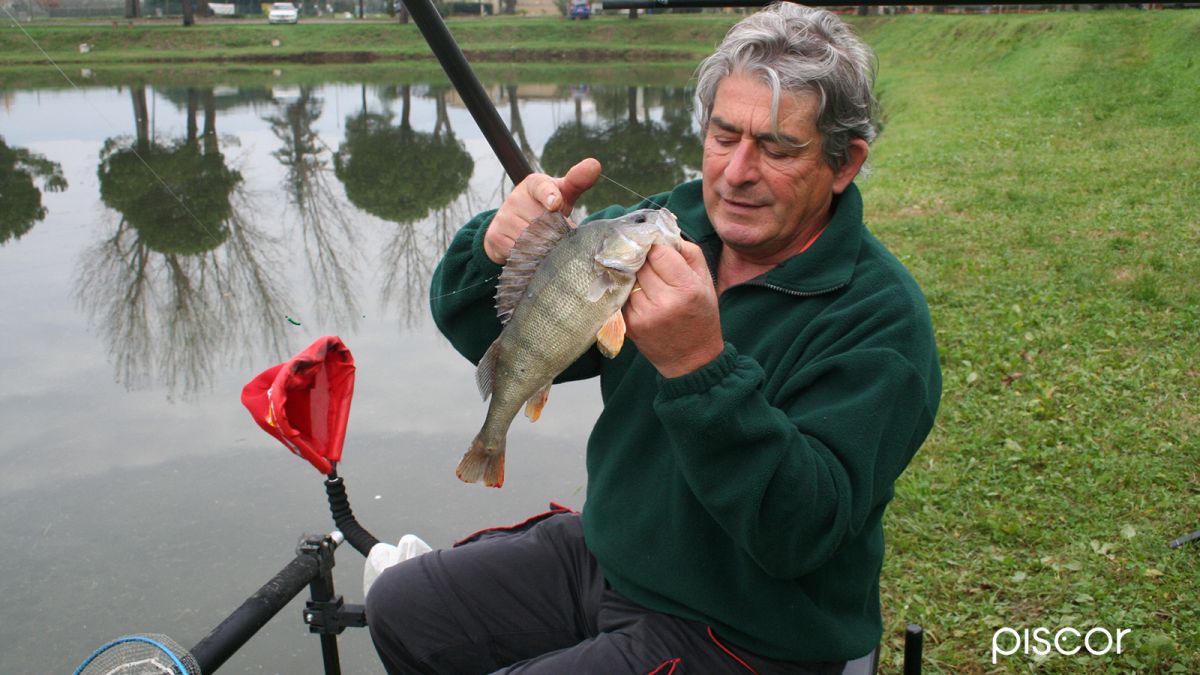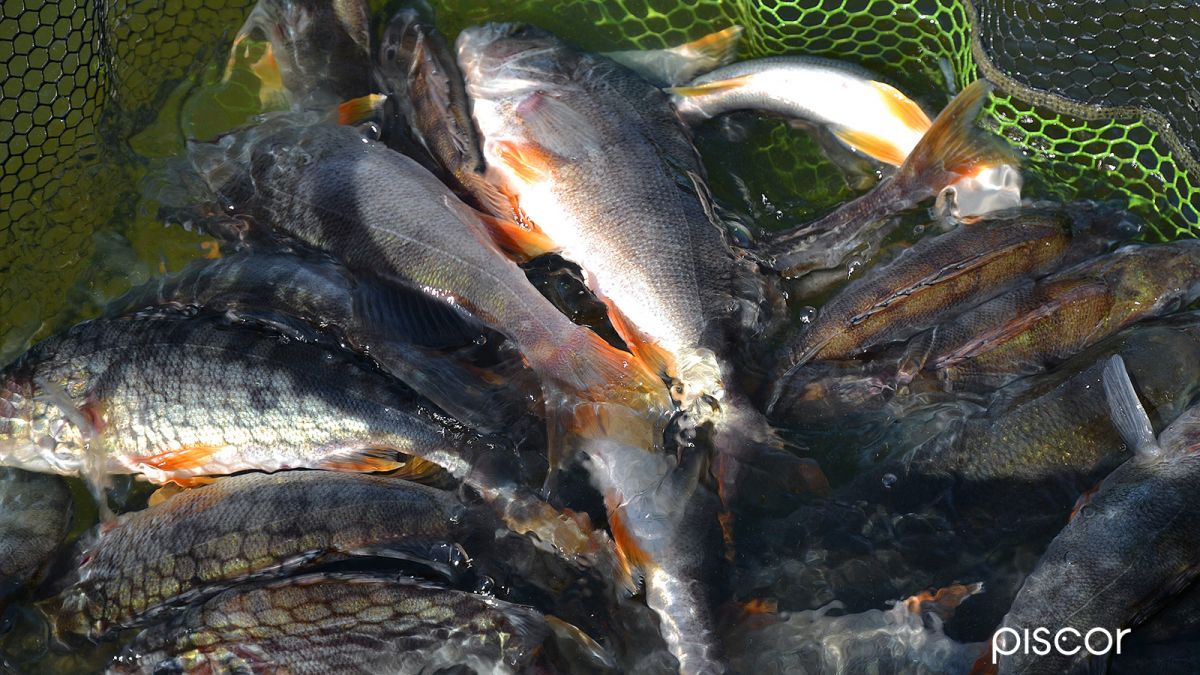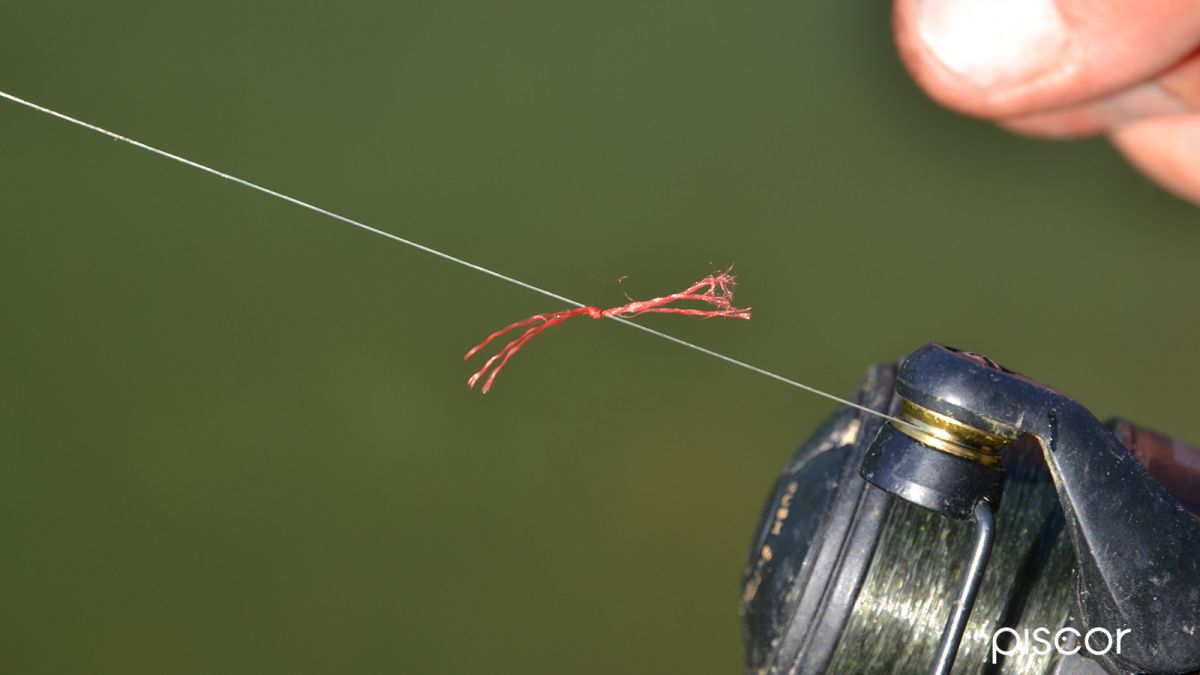Fishing is like life, beautiful because it is varied.
Sometimes we aim for one goal and then we find ourselves achieving something else, for exemple catching the last species of fish you thought: the European perch.
I was ledgering fishing, with ultra light feeder, in winter in a lake. No fish for half an hour, I thought that at least some bream would have been attracted by my feeder. I know that spot very weel, and usually fish there start eating soon.
That worried me a lot.
Very discouraged I decided to cast my feeder again and I noticed a light tremor of the tip, and, right after, a vibration of it. Catched!
After hooking the fish I realized it couldn't be a bream or a caraxy. It was very vigorous and gave continuous pulls and releases.
When I kept it with my landing net I found out it was a real perch, with a beautiful colorful ridge.
This happened for almost the entire fishing session.
Apart from a couple of breeches and carp that were right for the thin terminal, perches, perches and perches, some of which were really interesting in size, and showed that they liked the baits in my End Feeder Block.
Incredible, in almost 60 years of fishing had never happened to me!
Let's talk about technique
Obviously, the right season starts from the first cold autumn to the whole winter, because, by hooking small worms, fishing perch will be difficult during the hot season, even because, in summer the diet of perches is made up of much more than maggots.
The research we have carried out to try to understand more has been carried out through the feeder fishing with different systems, including the roubaisienne.
There is no doubt that the main factor that favours the catching of perch is their presence. The best point in the lake is the one that has a number of obstacles on the bottom.
There are large stones scattered here and there, but also branches . I wasn't able to understand what it was all about, but the fact of getting stuck every now and then makes me think about this.
The feeder
This type of fishing can be done both in still and running water and, even if it is the first time for me, it seems to me to have intuited some things.
Perhaps, as I continue to practice it, I will discover new ones, but in the meantime, let's see what I have discovered. First of all, it is necessary to fish with light and small feeders because it is in the descent that the "miracle" of the arrival of perch is accomplished.
Furthermore, it is better to set fishing no more than thirty metres from the shore; this is because, after a while, it is appropriate to make some changes to the fishing action, but that is what we will talk about later.
To begin with, there's nothing better than a classic block end and, among these, the legendary Black cap in the middle size with a 20 gram ballast I think is the best for at least two reasons.
The first is that it contains a quantity of baits ideal to start by creating a feeding area sufficiently furnished with larvae, the second is that the holes on the body of the fedeer are quite large and allow the start of the larvae' exit from the first contact with water.
This creates a sort of wake throughout the liquid thickness which, in my opinion, is the most important feeding action towards our predators.
As soon as the first fish arrives, it is better to replace the medium size Black Cap with a smaller one.
The feeder action is exactly the same, but it drastically reduces the amount of food placed in the water. perches are not chubby and it is better to save the baits not to fill them up quickly.
The alternative to the Black cap is that of Drennan's Carpfeeder which also has very large holes.
Now, you will understand why it is better not to go beyond 30 meters away. It happens that, the perch begin to detach from the bottom.
This happens because the exit of the larvae tends to make the fish rise, especially if there are several on the spot.
All this suggests a change of technique to make one that is really exciting, that
For this reason, you have to use the Drennan's Carpfeeder in this phase .
This model has, in fact, the possibility of releasing the ballast that is at the bottom end. Once it is removed, you will have a block end whose weight is limited to the amount of bait it can carry, so it can hardly be cast beyond 30 m, but it will sink slowly releasing, during the fall, almost all of its content.
Just keep a close eye on the rod fall by simply holding the wire under very slight tension with the tip low and, in many cases, we will feel the bite before the feeder reaches the bottom. This will be given by a continuous traction without the classic vibrations that characterize the bite of the perch with the feeder anchored to the ground.
Regarding the terminal line, it is better to use a medium-long one. At least 50 cm to fish on the ground, while for dropping fishing I had the best results with a final of about a meter. Although the fall of a lead-less feeder is quite slow, of course, a long terminal line gives the fish more time to follow the descent in water.
The roubaisienne rod
I decided then to try fishing perch using a roubaisienne. I have happened, especially abroad, to catch some perches with the roubaisienne, using it for looking exclusively for this species, was strange to me.
The most difficult part, in my opinion, was understanding with what kind of lead to fish them. Then, thinking back to what had been the sequence of the previous days with the feeder, I transferred the experiences of those trips to rouba.
I had started with the blockend on the bottom and then I put three or four balls of larvae to create a feeding area, then I started fishing with a lead of about a gram with a bulk of about 60 cm from the hook and three leads equidistant feeding with a catapult. I placed no more than ten centimetres from the bottom.
After half an hour of silence, the first bites. I insisted until I started to see more and more bites. I had made a kit with a line of about half a gram.
About sixty centimeters of leads equidistant from each other so that the descent was slow and constant. I must say that the amount of fish was lower than that with the technique of the feeder, perhaps because the perches do not approach the shore much or perhaps because ... every day are not the same, in any case I made a further discovery, namely that a beautiful bear hanging from the hook is very attractive for perches!

